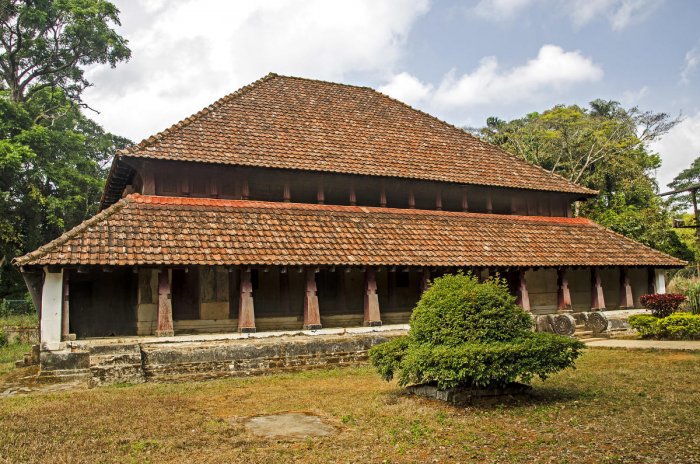
Linga Raja I was the king of Kodagu and a subordinate ally of Nawab Hyder Ali of Mysore. In 1780, the king passed away, leaving his first son, the 16-year-old Dodda Veerarajendra as heir to the throne. Hyder Ali saw this as the perfect time to bring Kodagu under his complete control.
So, he moved the king’s family members from the Madikeri Fort in Kodagu to Gorur Fort in Hassan. Displeased with the king’s removal, Kodagu rose in rebellion against Hyder.
Elsewhere, the second Anglo-Mysore war was raging on. In 1782, Hyder died and his son Tipu Sultan succeeded him. Linga Raja’s family was shifted and imprisoned at Periyapatna Fort in Mysore. In December 1788, Dodda Veerarajendra, his wife, daughter, brothers Linga Raja II (aka Lingarajendra) and Appaji Raja and other family members managed to escape from their confinement.
According to scholar H Moegling (in 1855) ‘some faithful Coorg friends assisted him (the king) and conducted him safely’. Historians I M Muthanna and D N Krishnaiah identified these friends as Kulletira Ponnanna, Pattacheruvanda Boluka, Appaneravanda Achaiah, Ketolira Achuvanna and others. They disguised themselves as oil-vendors and reached Periyapatna, where they were able to release the royal family.
The people of Kodagu declared Dodda Veerarajendra their king but the new raja and his family had no place to stay. The Mysore Sultan still held the Madikeri Fort. The king first stayed at Kurchi where he made a temporary, makeshift residence.
One day, when the king was away, bandits from Wayanad attacked Kurchi; they killed the queen, looted the ornaments and burnt down the place.
D N Krishnaiah writes that with the king living near poverty, Ketolira Achuvanna recommended his own native village — Yavakapadi near Kakkabe — as a suitable place for the raja to stay till the war was over. Back then, Kakkabe was a remote location, surrounded by mountains and jungles. Achuvanna accommodated the raja in his own ancestral house until a new palace was built.
A farmland of the Puliyanda family was found to be the most secure site for a palace; hidden by natural barriers from all sides, it was relatively inaccessible to invaders.
Four brothers of a family living there were asked to vacate the place, with the promise of compensation. Everyone complied, save for the youngest brother Karichcha.
When the palace’s construction began, Karichcha troubled the construction workers during the day and hid in the forest at night. Displeased with this, the raja got him captured and put to death
The palace eventually came up at the place and is called ‘Naalnaad aramane’ or Nalknad aramane, after the name of the region. The palace was relatively simple: a two-storey building with a thatched roof, built in the native Ainmane tradition.
The descendants of Achuvanna and his two brothers became the Aramane thakka (palace chamberlains); they were the hereditary chieftains in-charge of the Naalnaad palace. Meanwhile, Kodagu became free of Tipu’s rule in 1792. For Dodda Veerarajendra, life had come full circle, as he gained possession of his father’s old residence.
source: http://www.deccanherald.com / Deccan Herald / Home> Spectrum / by Mookonda Kushalappa / October 03rd, 2020

